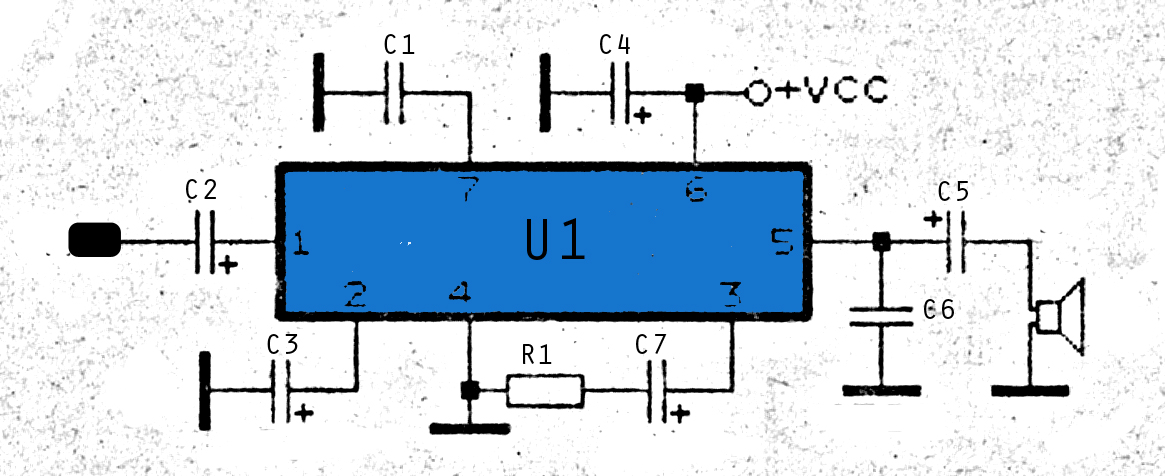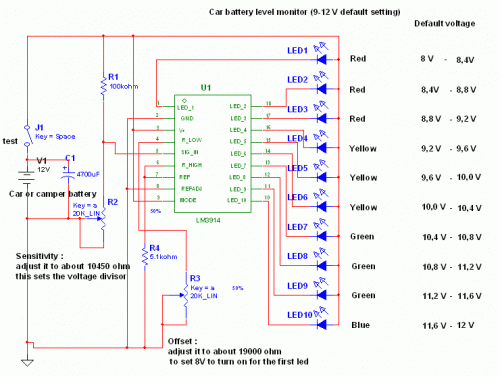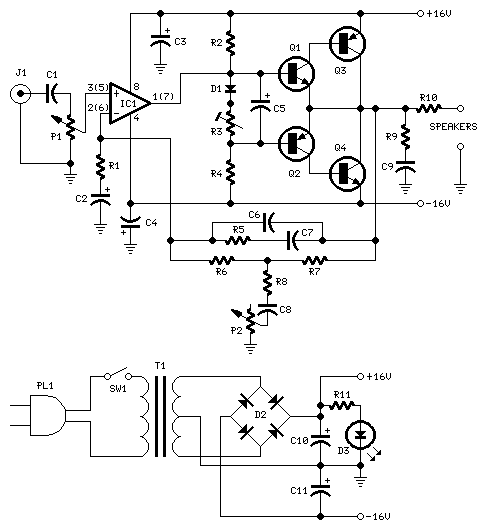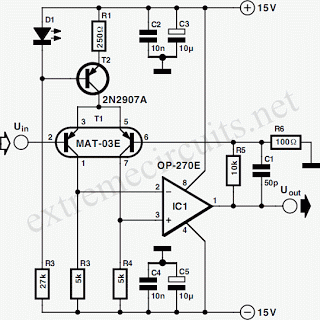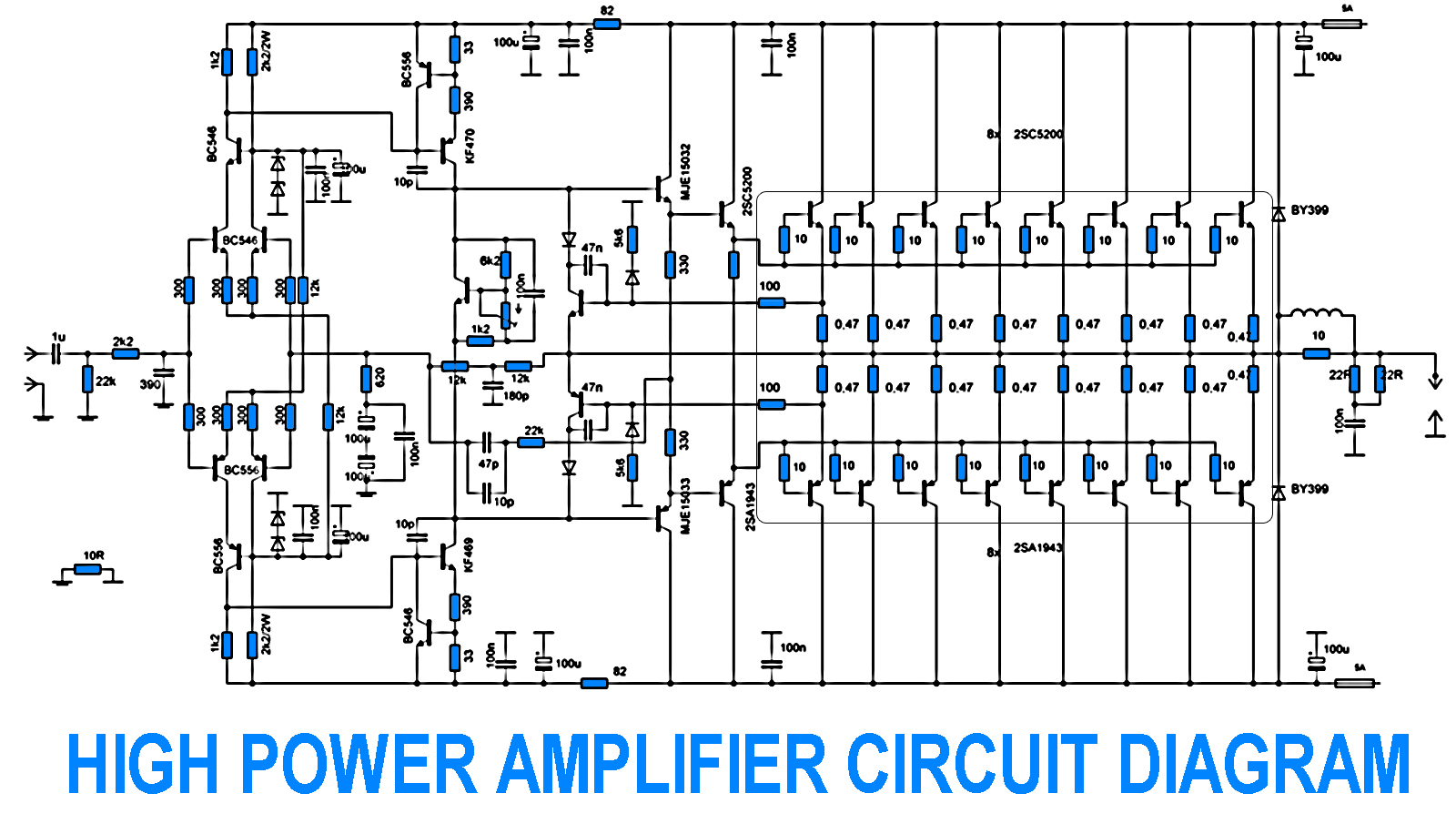
HA13118 IC For 18W Car Stereo Amplifier
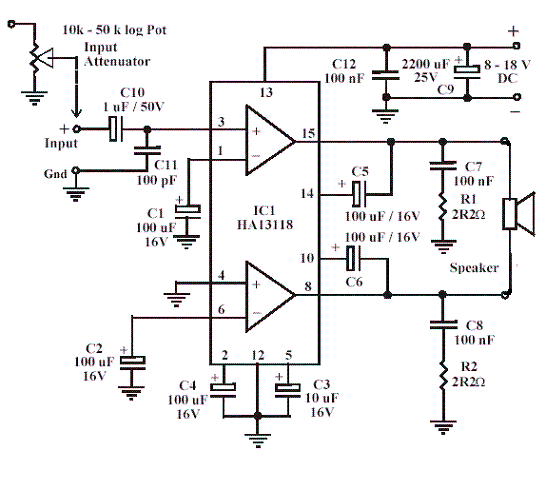
This is a Class AB audio power amplifier utilizing the Hitachi HA13118 module, suitable for car applications. It can also be used in various other settings.
The Class AB audio power amplifier is designed to deliver high-quality sound reproduction while maintaining efficiency. The Hitachi HA13118 module serves as the core component, providing the necessary amplification with a balance between Class A and Class B operation. This configuration allows for lower distortion levels and improved linearity, making it ideal for audio applications where fidelity is paramount.
In a typical schematic for this amplifier, the input stage consists of a differential amplifier configuration, which helps to reduce noise and improve signal integrity. The output stage employs complementary push-pull transistors, which are responsible for driving the speakers. The use of feedback mechanisms is crucial in this design, as it ensures stability and minimizes distortion across the audio frequency range.
Power supply requirements for the HA13118 module are critical. A dual power supply, typically ±15V, is recommended to provide the necessary headroom for dynamic audio signals. Proper decoupling capacitors should be placed near the power pins of the module to filter out high-frequency noise and ensure stable operation.
Thermal management is also an essential aspect of the design. Heat sinks should be employed to dissipate the heat generated during operation, particularly under high load conditions. The amplifier should be housed in a well-ventilated enclosure to prevent overheating and ensure reliable performance.
Overall, the Hitachi HA13118 Class AB audio power amplifier is a versatile solution for achieving high-quality audio amplification in various applications, particularly in automotive environments, where sound quality and efficiency are critical.This is a class AB audio power amplifier using the Hitachi HA13118 module for your Car. Actually not only can be used in your car application but .. 🔗 External reference
The Class AB audio power amplifier is designed to deliver high-quality sound reproduction while maintaining efficiency. The Hitachi HA13118 module serves as the core component, providing the necessary amplification with a balance between Class A and Class B operation. This configuration allows for lower distortion levels and improved linearity, making it ideal for audio applications where fidelity is paramount.
In a typical schematic for this amplifier, the input stage consists of a differential amplifier configuration, which helps to reduce noise and improve signal integrity. The output stage employs complementary push-pull transistors, which are responsible for driving the speakers. The use of feedback mechanisms is crucial in this design, as it ensures stability and minimizes distortion across the audio frequency range.
Power supply requirements for the HA13118 module are critical. A dual power supply, typically ±15V, is recommended to provide the necessary headroom for dynamic audio signals. Proper decoupling capacitors should be placed near the power pins of the module to filter out high-frequency noise and ensure stable operation.
Thermal management is also an essential aspect of the design. Heat sinks should be employed to dissipate the heat generated during operation, particularly under high load conditions. The amplifier should be housed in a well-ventilated enclosure to prevent overheating and ensure reliable performance.
Overall, the Hitachi HA13118 Class AB audio power amplifier is a versatile solution for achieving high-quality audio amplification in various applications, particularly in automotive environments, where sound quality and efficiency are critical.This is a class AB audio power amplifier using the Hitachi HA13118 module for your Car. Actually not only can be used in your car application but .. 🔗 External reference

